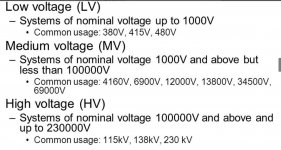kwired
Electron manager
- Location
- NE Nebraska
- Occupation
- EC
That has to be dealt with even when everything is overhead.Hopefully being the key word..
you know where an additional circuit is going to be needed or where potential housing developments or industrial will be in 10 or 20 years?
I have buried spare service raceways before on commercial/industrial and have pulled conductors through them at times when more service capacity became needed. That may be a little trickier for utilities to determine where they may need to do similar with a MV distribution system though.


